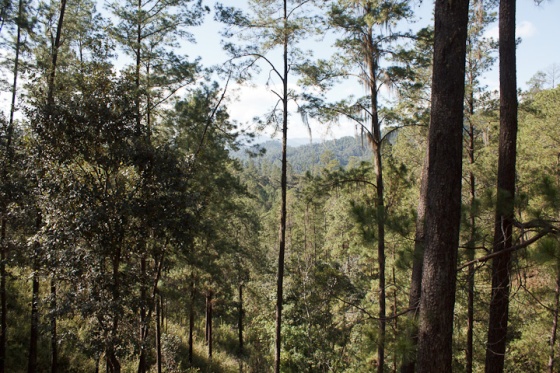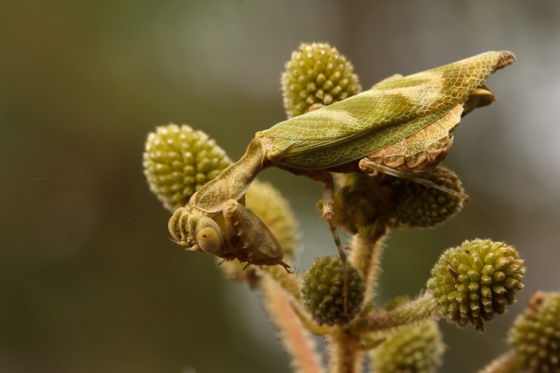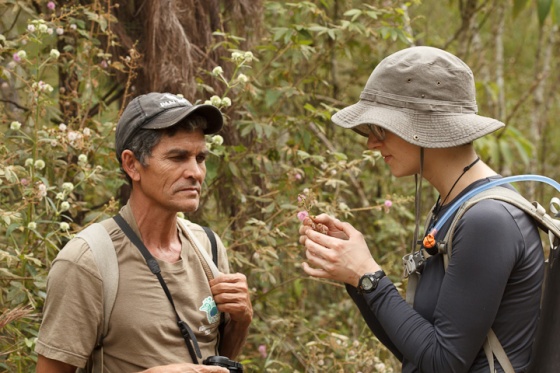Catherine Scott and I continue on our Honduran odyssey, finally making it out into the field to begin our work on Red-throated Caracaras. We are working in a medium-elevation pine forest, consisting of mainly Pinus oocarpa and a couple oak species. This makes the surroundings seem very much like the foothills of the Rockies, except the species composition is way off!
In these pine forests, one of the main defoliating species are fungus-rearing leafcutter ants!
On some of the flowering plants, mantids lie in wait of unwary pollinators.
Being weird gringos, and something of a novelty, we get great opportunities to chat with curious kids. Some of them are really enthusiastic about birds and insects, and some can be persuaded to show us where to find the cool bugs.
We will keep searching out these cool bugs, as our Honduras fieldwork continues. Please stay tuned for more updates from the field, when and where we can fit them in.










